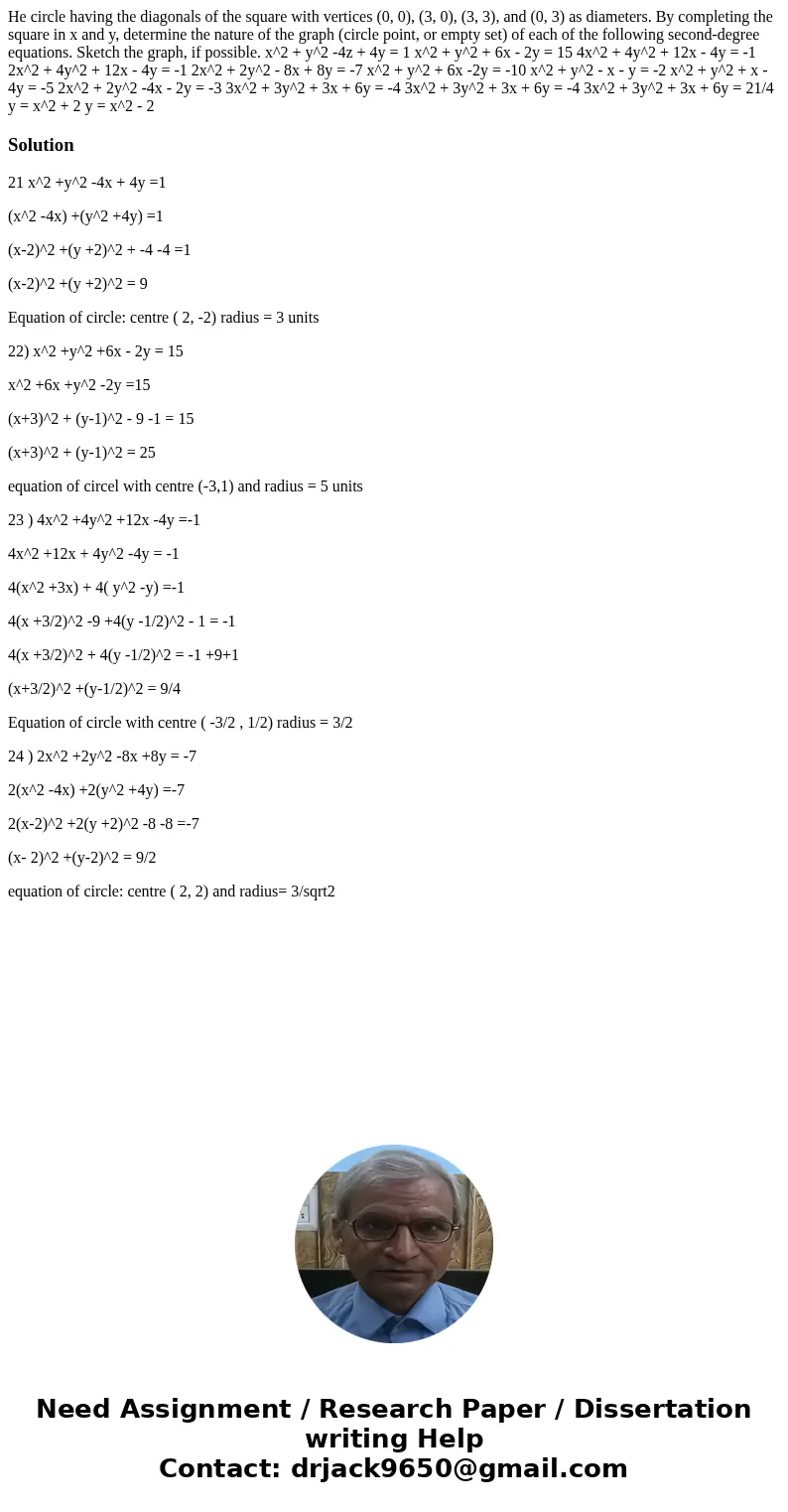He circle having the diagonals of the square with vertices 0
He circle having the diagonals of the square with vertices (0, 0), (3, 0), (3, 3), and (0, 3) as diameters. By completing the square in x and y, determine the nature of the graph (circle point, or empty set) of each of the following second-degree equations. Sketch the graph, if possible. x^2 + y^2 -4z + 4y = 1 x^2 + y^2 + 6x - 2y = 15 4x^2 + 4y^2 + 12x - 4y = -1 2x^2 + 4y^2 + 12x - 4y = -1 2x^2 + 2y^2 - 8x + 8y = -7 x^2 + y^2 + 6x -2y = -10 x^2 + y^2 - x - y = -2 x^2 + y^2 + x - 4y = -5 2x^2 + 2y^2 -4x - 2y = -3 3x^2 + 3y^2 + 3x + 6y = -4 3x^2 + 3y^2 + 3x + 6y = -4 3x^2 + 3y^2 + 3x + 6y = 21/4 y = x^2 + 2 y = x^2 - 2 
Solution
21 x^2 +y^2 -4x + 4y =1
(x^2 -4x) +(y^2 +4y) =1
(x-2)^2 +(y +2)^2 + -4 -4 =1
(x-2)^2 +(y +2)^2 = 9
Equation of circle: centre ( 2, -2) radius = 3 units
22) x^2 +y^2 +6x - 2y = 15
x^2 +6x +y^2 -2y =15
(x+3)^2 + (y-1)^2 - 9 -1 = 15
(x+3)^2 + (y-1)^2 = 25
equation of circel with centre (-3,1) and radius = 5 units
23 ) 4x^2 +4y^2 +12x -4y =-1
4x^2 +12x + 4y^2 -4y = -1
4(x^2 +3x) + 4( y^2 -y) =-1
4(x +3/2)^2 -9 +4(y -1/2)^2 - 1 = -1
4(x +3/2)^2 + 4(y -1/2)^2 = -1 +9+1
(x+3/2)^2 +(y-1/2)^2 = 9/4
Equation of circle with centre ( -3/2 , 1/2) radius = 3/2
24 ) 2x^2 +2y^2 -8x +8y = -7
2(x^2 -4x) +2(y^2 +4y) =-7
2(x-2)^2 +2(y +2)^2 -8 -8 =-7
(x- 2)^2 +(y-2)^2 = 9/2
equation of circle: centre ( 2, 2) and radius= 3/sqrt2

 Homework Sourse
Homework Sourse